QuestionQUESTION: Sorry I have a two part question. First I have been reading everything I can about Bearded Dragons and everything seems to say something different. About the substrate; cal. sand, play sand, newspaper, carpet...... ahhh I am so confused! I should say the pair we are bringing home are two years of age. I want to use the simplest, but the healthiest at the same time. I have read they need to dig.....
Second...the pair is a male female. They have been together since baby hood. They were brought back to the pet store (small family run store with high standards) in poor condition. They are now up to par however they seem to not want to be apart from each other. I know at some point there is a chance they will breed... however if there is a way I would like to keep that from happening until we're ready... I have read that the amount of day light will effect that. What would you say on that? Also how do I get ready for eggs? I need good simple instructions on a homemade incubator and how to. I only want to do the best thing for these two, especially from what they came from. Any hep would be greatly appreciated.
ANSWER: Hi Clarissa, Substrate has long been one of the most controversial topics in reptile keeping. People have very strong and divergent opinions on it so it is no wonder you are confused! I would have to say that the simplest, safest and healthiest substrate choice is most certainly the newspaper. It is also the cheapest but definitely not the prettiest option! With newspaper, you eliminate any risk of intestinal impaction potential which is present with any loose particle substrate (with the exception of rabbit pellets). It is also dust free and light weight. The other main advantage is the level of hygene that can be maintained. Bearded dragons are very commonly infected with a couple different intestinal parasites ( Coccidia and pinworms) that both have direct life cycles. A complete change and clean-up after a bowel movement (which is not really possible with other substrates) will help keep these parasites from reaching clinically relevent numbers. In light of their previous poor care and condition I would really recommend that you take a fresh faecal sample from each dragon into your vet for coccidia and pinworm screening.
I like to provide beardeds with some form of hide spot that they can climb under or into, that availability tends to reduce the digging behaviour. Some reptiles are obligate burrowers and absolutely need to be able to dig, I would not classify beardeds that way with the exception of gravid females needing to lay eggs.
The high point for breeding activity with beardeds is in the early spring just after the winter slowdown or brumation. It is triggered in part by the lengthening daylight hours as well as other factors like barometric pressure changes. Even dragons kept under completely artificial lighting seem to "know" when breeding season approaches. Nature will takes its course with adult animals and the only sure way to control it is through separating the pair during that time.
I have included a couple links. The first is the excellent and comprehensive care site by biologist Dr. Kathryn Tosney. She also runs a mailing list where you can chat with other bearded owners.
http://www.bio.miami.edu/ktosney/file/BDcare.html
This is a link to instructions for a homemade incubator. I have used this type successfully for several species over the years.
http://members.aol.com/TheWyvernsLair/incubator.html
Congratulations on your new dragons, it sounds like they were much luckier this time around!
---------- FOLLOW-UP ----------
QUESTION: The two dragons came home...The hot side of my tank is apx. 95-98 degrees while the cool side is around 80-82. The male dragon is very content and happy...eating well, pooping well, very happy dragon. The female on the other hand I'm not so sure about. Thursday she ate and pooped well. Friday morning she didn't go to the bathroom at all in the morning ate well but not in the evening. This morning she has hardly ate anything and still has not used the bathroom. Is it the new setting? She is also irritated, she even put up her beard and attacked the male which in the past several days has danced around alot with a very black beard.
Any help you could give me again would be great.
ANSWER: Hi Clarissa, Moving to a new enclosure is always a stress producing event for reptiles. Many will not eat at all for several days so your pair are actually adjusting fairly well. I tend to recommend putting off handling them for the first 7 - 10 days to let them adjust and start feeding well. They don't need to defecate every day so you need not worry about that, every few days is fine. Your hot spot temp. range is O.K but toward the lower end of the recommended range. If it often hovers more toward the 95 degree level you might try to bring it up just a bit to the 100- 105 F range if you can.
---------- FOLLOW-UP ----------
QUESTION: Well I finally went back where I got the dragons. Turns out the female dragon was already gravid when I picked her up! Not sure I am very happy about that. She hardly eats, can barley get around the enclosure. I am so worried about her not being able to lay eggs ect. At this point I am more worried about her than anything. I put a container with damp sand but she isn't even looking at it. Since I have no idea how long she's been in this condition I simply don't know what to do or how to care for her. Help.... how do I know when she's ready to lay and what should I give her?
AnswerHi Clarissa, That does complicate things somewhat. As I remarked earlier, nature will take its course with mature animals, and in this case, despite their poor physical condition.
You may have to consider separating the pair to reduce her stress, at least until she lays the clutch, especially if the male is actively pestering her.
It is normal for the appetite of heavily gravid females to drop but she should not seem weak. If her inability to move around the enclosure stems from apparent weakness (rather then just her increased size) then I would suggest you have a vet examine her. A weak, lethargic female could definitely run into complications with not being able to expel the eggs.
Adequate dietary calcium is always important for beardeds but it becomes critical for laying females. With her reduced appetite you should be dusting everything that is offered to her.
Assuming that she is physically strong enough she will start roaming the enclosure and digging when she is close to laying. The sand container should be around 4 inches deep and damp enough to hold a shape as she digs.

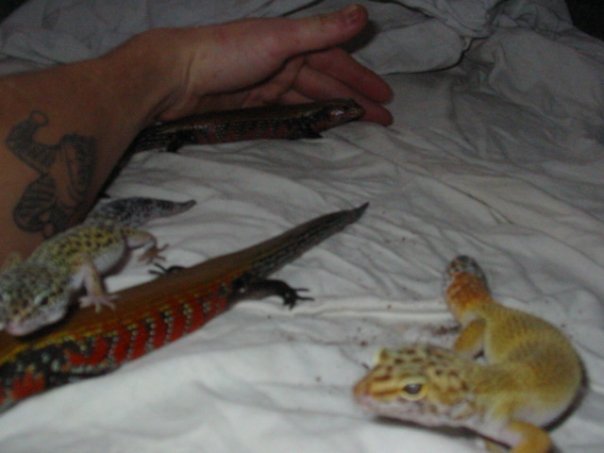 multiple questions lol
Questionmy two geckos, and one
QUESTION: ok well
multiple questions lol
Questionmy two geckos, and one
QUESTION: ok well
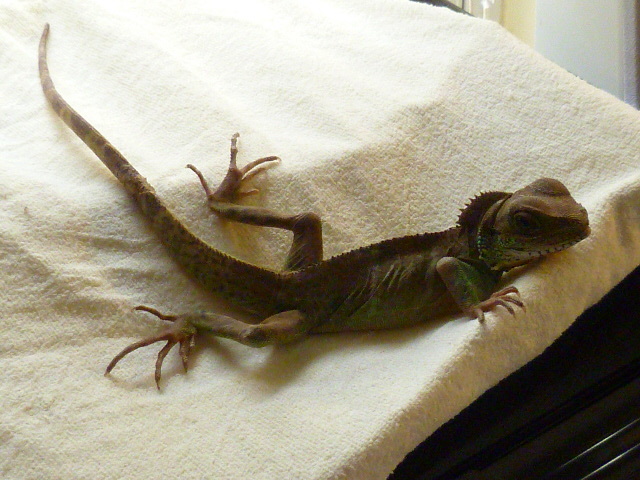 our water dragon
QuestionQUESTION: Hello. We recently adopted a Chinese
our water dragon
QuestionQUESTION: Hello. We recently adopted a Chinese
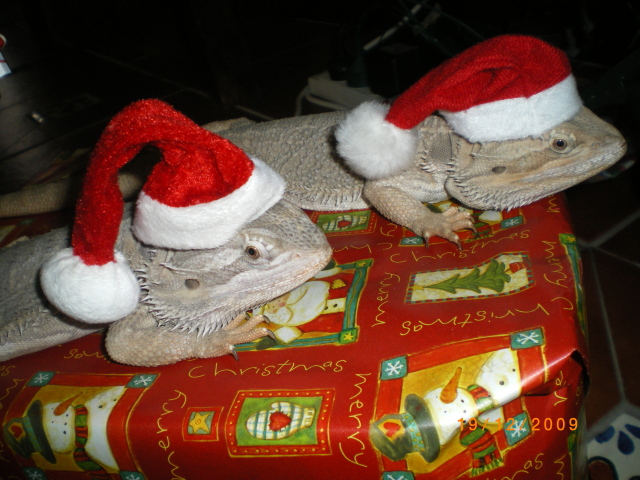 bearded dragon behaviour??
Question
Pepa and Pepito
John,I have 2 Bear Dragons, 1
bearded dragon behaviour??
Question
Pepa and Pepito
John,I have 2 Bear Dragons, 1
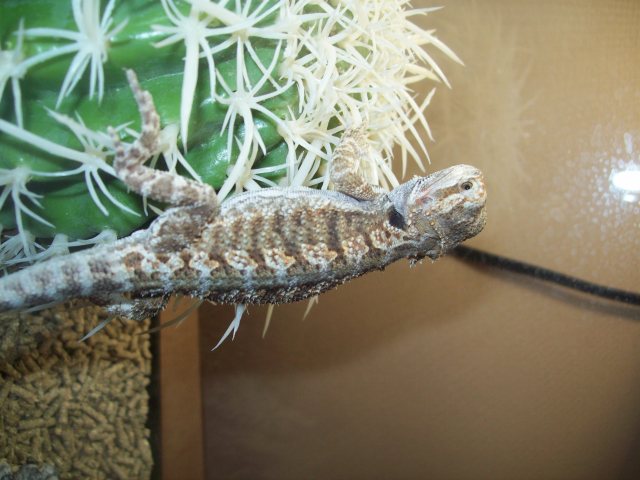 is my bearded dragon sick?
Question
Iggie the bearded drag
hello, my name is Jocel
is my bearded dragon sick?
Question
Iggie the bearded drag
hello, my name is Jocel
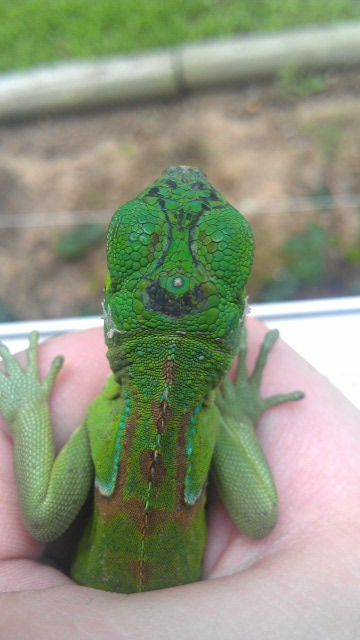 black head
QuestionTANKS HEAD
QUESTION: Im worried bout my
black head
QuestionTANKS HEAD
QUESTION: Im worried bout my